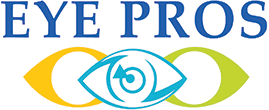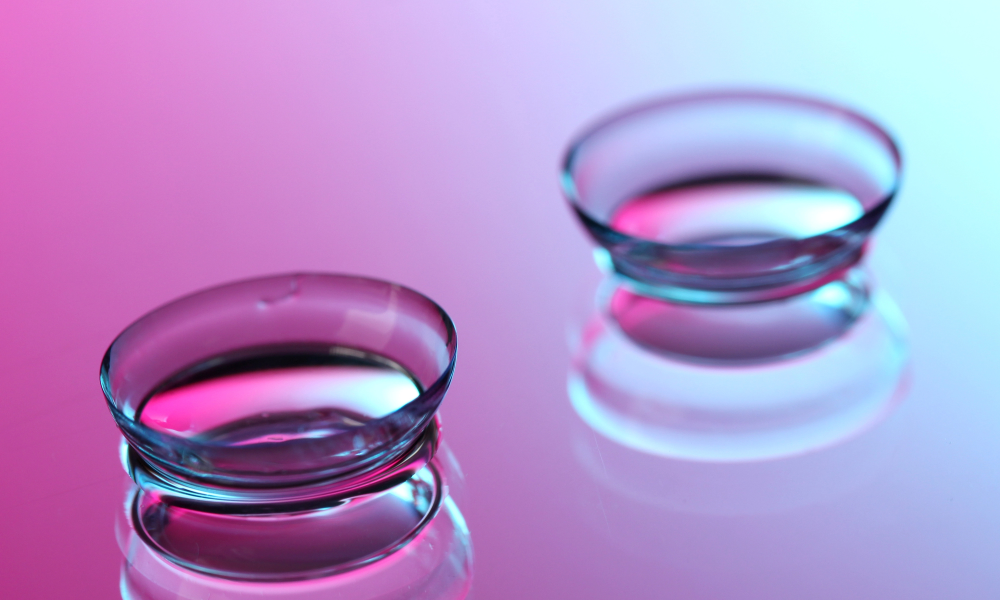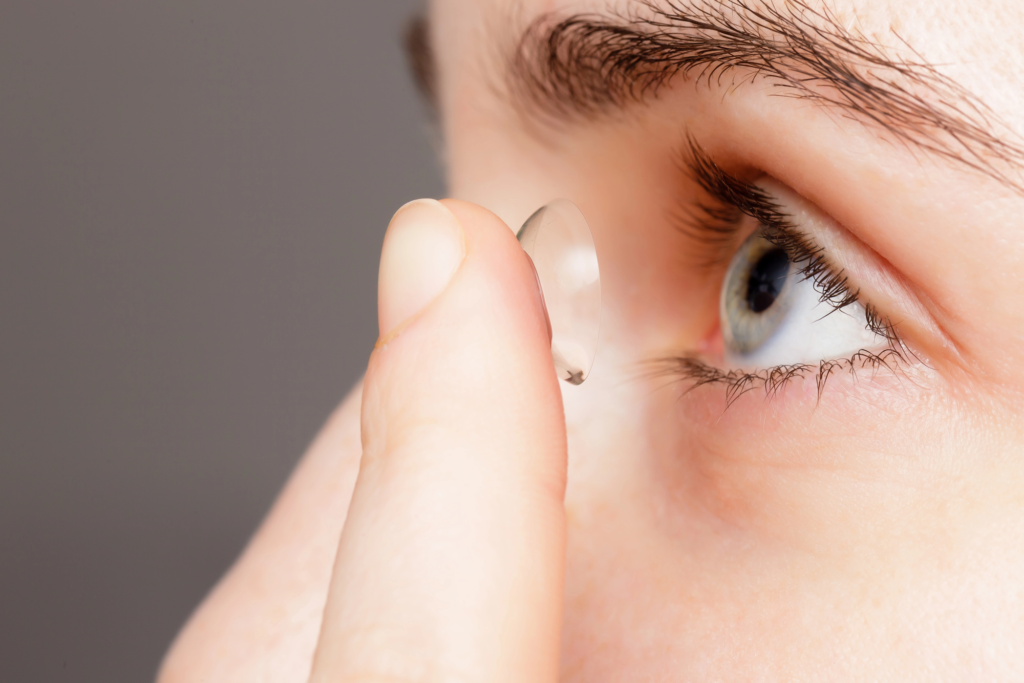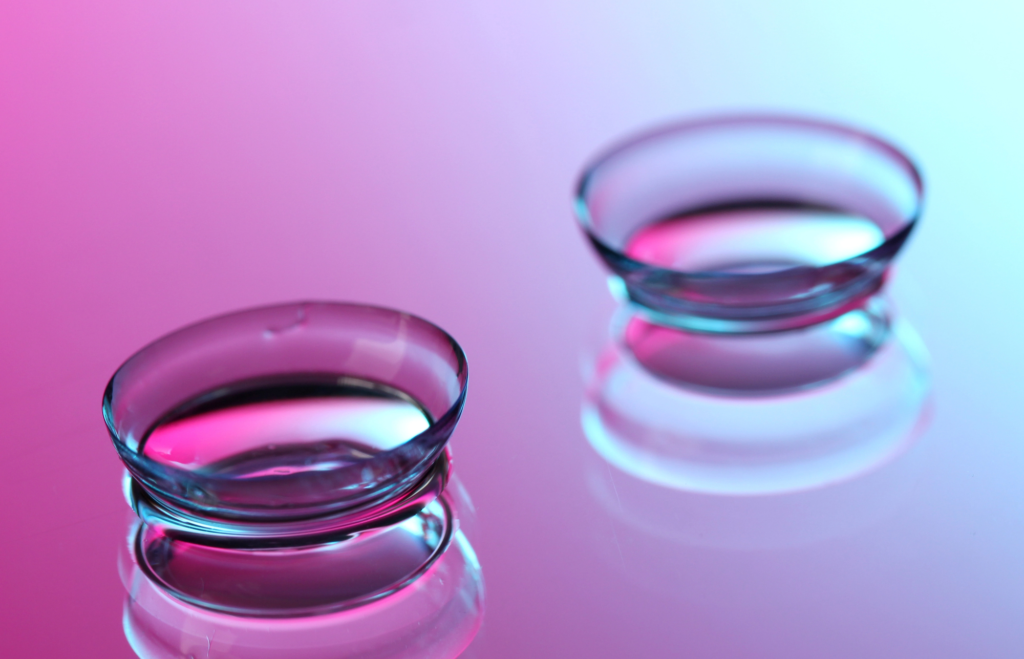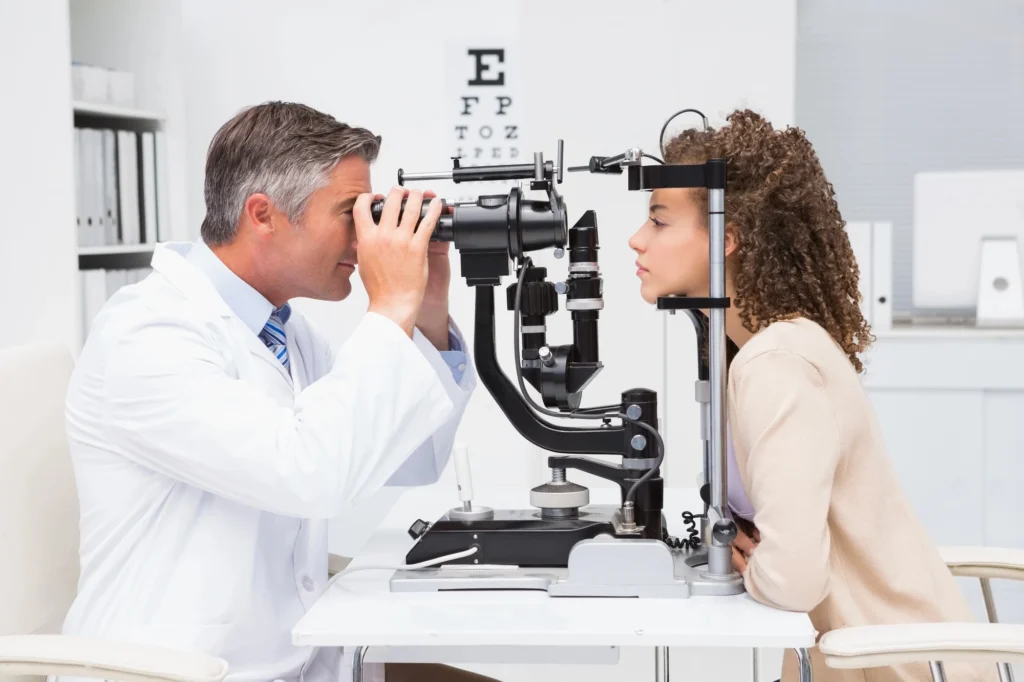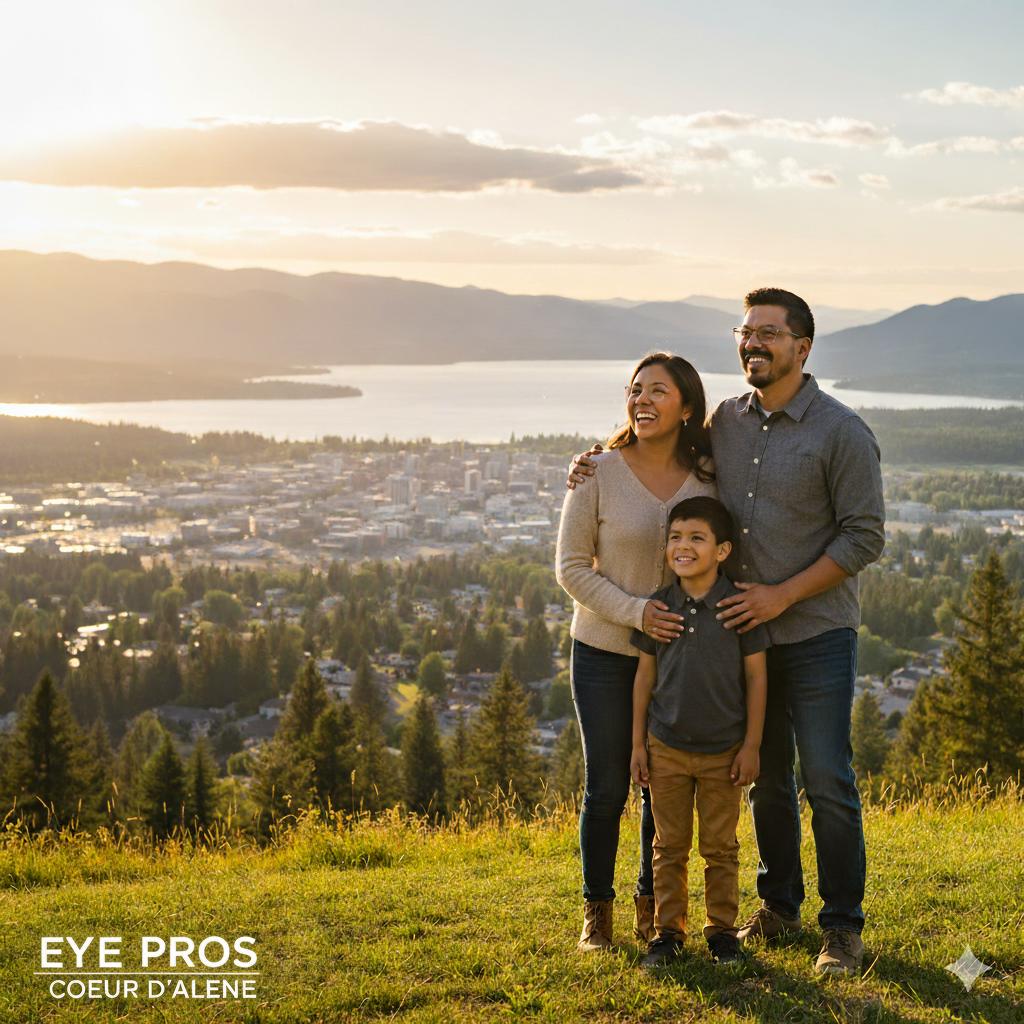Why’s Everyone in Coeur d’Alene Ditching Glasses for Contacts?
Seriously, take a walk downtown near Sherman Avenue or Tubbs Hill—you’ll notice tons of people enjoying that clear, glasses-free view of the lake. And honestly? It makes sense. Glasses get foggy, slide off your face when you’re hiking, boating, or chasing your kids through McEuen Park, and they can easily break when you’re out mountain biking on Canfield Mountain trails.
Contacts, though? Pop ’em in and forget they exist. Go paddleboarding, play soccer, hit the slopes at Silver Mountain—no problem.
If you’re the “always-on-the-move” type (or, let’s be real, just a little clumsy), contacts are a total win. No awkward sliding, no smushed frames under your ski goggles, no fogged-up lenses when you step inside from the cold.
And let’s talk about confidence. Some folks simply feel better without glasses hiding their face. Plus, with color contacts available right here in Coeur d’Alene, you can change your eye color as easily as your outfit. Subtle look? Go for it. Wild vampire eyes for Halloween? Absolutely. No wonder locals are catching on.
Daily vs. Monthly Contacts: Which Side Are You On?
Alright—daily versus monthly contacts. It’s the eye-care version of the “Priest Lake vs. Lake Coeur d’Alene” debate.
- Daily contacts are the easy choice: wear once, toss ’em out, done. Perfect if you’re not into cleaning lenses (no judgment) or you’re always rushing out the door. Fresh pair every morning, no cases, no solution, no stress.
- Monthly contacts, on the other hand, are the budget hero. A little more care, but you’ll save money—especially if you’re buying for the whole family.
Sure, dailies cost more upfront, but many Coeur d’Alene optometrists offer rebates, loyalty discounts, or bundle deals that narrow the price gap. Got allergies? Dailies can help. Prefer sticking to a routine (or just saving for ski season)? Monthlies might be more your vibe.
Bottom line: choose what keeps your eyes happy and fits your lifestyle. The best way to know for sure? Book a contact lens fitting in Coeur d’Alene—a quick visit gives you personalized advice from a local expert who actually knows the area’s dry air, pollen, and lake-life factors that can affect comfort.
Color Contacts in Coeur d’Alene: Change Your Look Without Sacrificing Comfort
Color contacts aren’t just for drama kids or costume parties. You can enhance your natural shade or go bold without giving up clear vision or comfort.
Special occasion? Wedding by the lake, themed party, or even a date night downtown—why not change things up? Just… skip the sketchy online sites. Those “no prescription” lenses for $6? Probably a fast track to pink-eye.
Real talk: always get a prescription from a Coeur d’Alene eye doctor. They’ll make sure the lenses actually fit your eyes, protect your vision, and look amazing doing it.
In short: have fun with your look—but do it safely. Style’s not worth sacrificing your eyesight.
Don’t Skip the Eye Exam—Seriously
Here’s what a lot of people forget: getting contacts isn’t just “pick a brand and go.” A proper contact lens fitting checks things like the curve of your cornea, tear film, and how your eyes react to different materials. It’s not one-size-fits-all.
Why bother? Because poorly fitted lenses can cause irritation, blurry vision, and long-term issues. During your fitting, you’ll test a few lens types to find the one that keeps your eyes happy all day.
And please—don’t wait five years between exams. Local optometrists in Coeur d’Alene recommend annual visits, especially since your vision can shift over time. Whether you work on screens all day, spend weekends out on the water, or just hit your 30s (welcome to the club), your eyes deserve that yearly check-in.
Where to Get Contacts in Coeur d’Alene
So—where should you actually grab your contacts?
Here’s the thing: you could scroll through endless websites, compare coupons, and wait on shipping from 1-800-CONTACTS… but why bother when Eye Pros in Coeur d’Alene already does the price-fighting for you?
We work directly with major name-brand suppliers to score the best deals on contacts—often beating online prices (yep, even the big guys). And if by some miracle you do find a lower price somewhere else, our Price Match Guarantee means we’ll match any authorized reseller.
That way, you get trusted brands, local service, and zero shipping drama—all while keeping more cash for, you know, huckleberry shakes or ski passes.
Pro tip: grab an annual supply while you’re at it. You’ll unlock manufacturer rebates and won’t have to stress about running out mid-summer when you’re out on the lake.
Bottom line? Skip the online guessing game. With Eye Pros in Coeur d’Alene, you’ll get crystal-clear vision, local support, and the best deal in town—all in one easy stop.
Final Word
Whether you’re hiking, skiing, boating, or just enjoying a latte downtown, contacts make life in Coeur d’Alene a little clearer—literally. Take care of your eyes, stay consistent with checkups, and you’ll see (and feel) the difference every single day.
